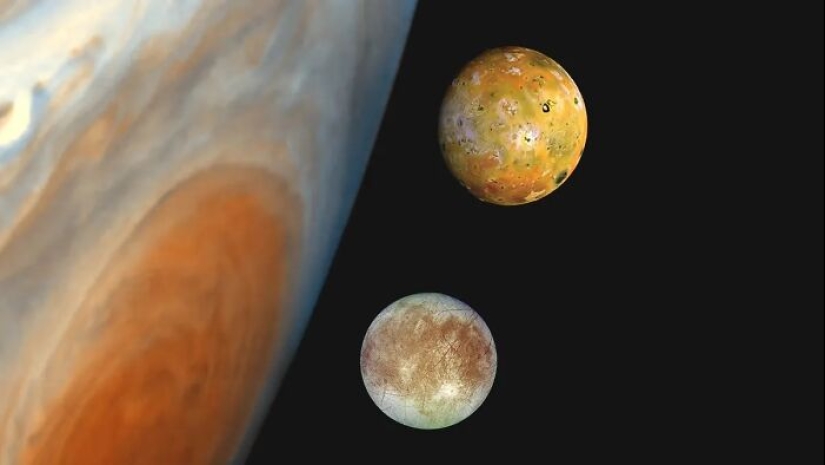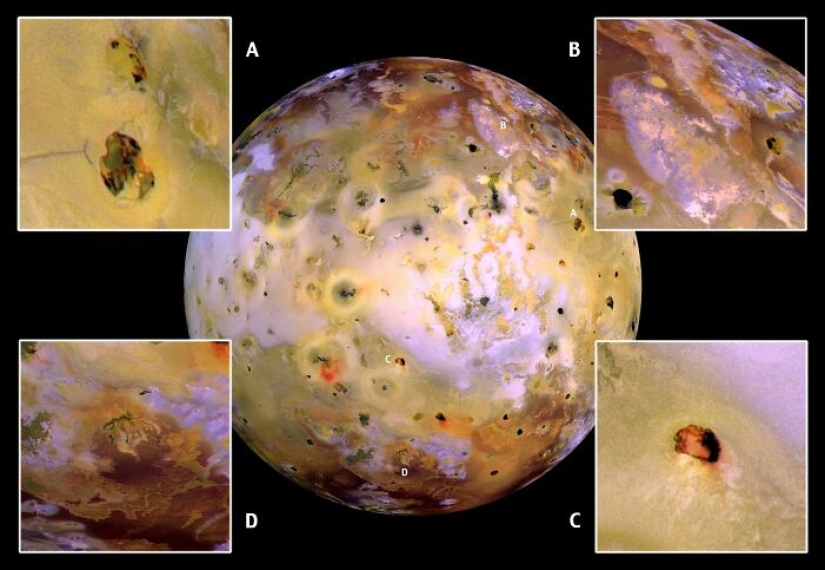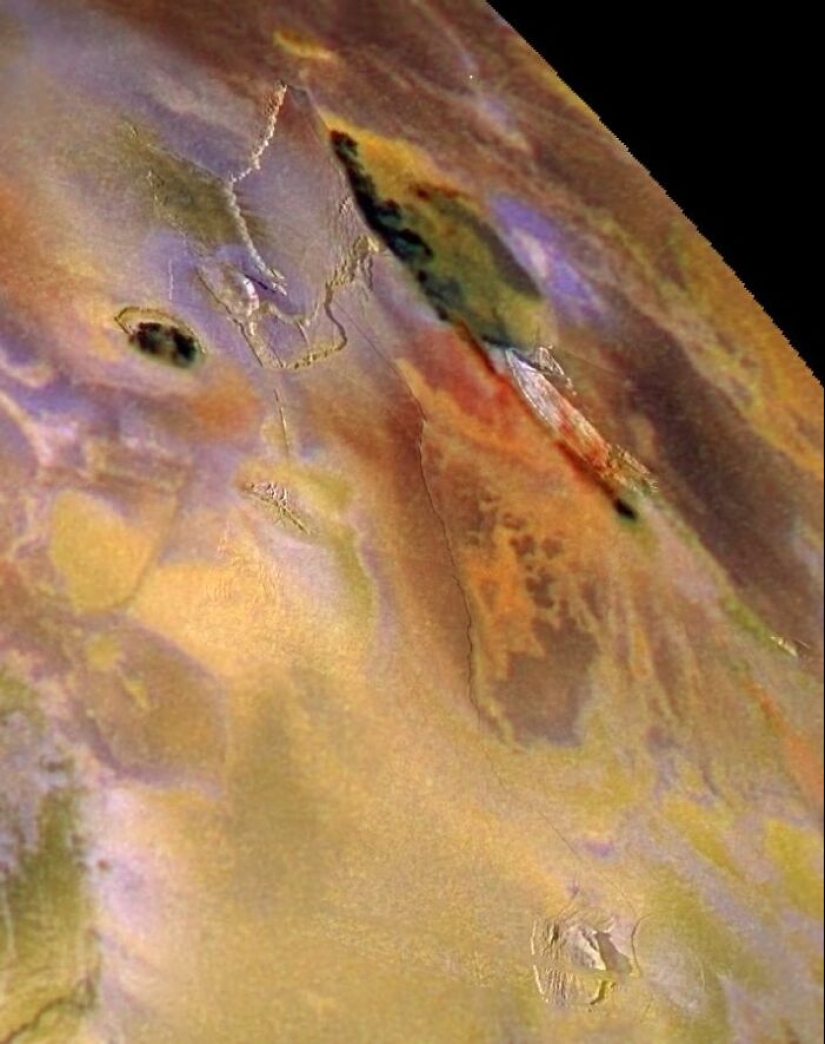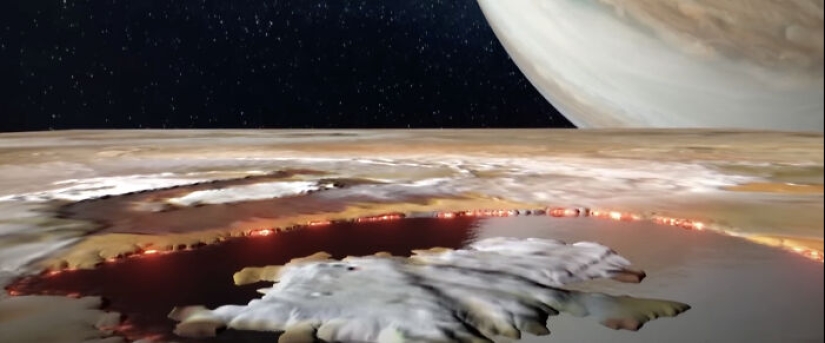NASA’s Juno Spacecraft Delivered A Spectacular Aerial View From Io, Including Mountains And A Lava Lake
Categories: Aerophoto | Photo project | Science | Technology | World
By Vika https://pictolic.com/article/nasas-juno-spacecraft-delivered-a-spectacular-aerial-view-from-io-including-mountains-and-a-lava-lake.htmlJupiter’s moon Io is considered the most volcanically active world in our solar system.
When in 1979, the Voyager 1 spacecraft flew by Io, it observed nine active volcanoes splashing fine lava particles several hundred kilometers into space. Observations by the Galileo spacecraft came 20 years later, indicating as many as 300 volcanoes active at a given time. And now, thanks to the Juno Spacecraft’s super close flybys, we can have a very detailed view of Io’s giant lava lake called Loki Patera.
More info: NASA
9 PHOTOS

1. NASA’s Juno spacecraft delivered close-ups of an astonishing lava lake on Io’s surface

2.

3.
Image credits: NASA
Scientists overwhelmed the entire world when, on the 16th of April, they announced new animations and photos based on transformed data collected during two recent flybys of NASA’s Juno mission to Jupiter.
The Juno spacecraft made extremely close flybys of Io in December 2023 and February 2024, getting as close as 930 miles (1,500 kilometers) from the surface and obtaining the first close-up images of the moon’s surface. The new images show a detailed view of Loki Patera, a 127-mile-long (200 km) lava lake, which scientists have been observing for decades.
“Io is simply littered with volcanoes, and we caught a few of them in action. We also got some great close-ups and other data on a 200-kilometer-long lava lake called Loki Patera. There is amazing detail showing these crazy islands embedded in the middle of a potential magma lake rimmed with hot lava. The specular reflection our instruments recorded of the lake suggests parts of Io’s surface are as smooth as glass, reminiscent of volcanically created obsidian glass on Earth,” Juno’s principal investigator Scott Bolton shared the excitement. “There is amazing detail showing these crazy islands embedded in the middle of a potential magma lake rimmed with hot lava,” he added.

4. Jupiter has 95 moons that have been officially recognized by the International Astronomical Union, yet the 4 largest ones are Ganymede, Callisto, Io, and Europa

5.
Image credits: NASA
Jupiter is the 5th planet from the sun and the second brightest planet in the night sky, after Venus. It’s so big that we could fit more than 1,300 Earths inside, and is known as a very chaotic and stormy place – some of the winds can be as fast as 335 miles an hour at the equator.
The astronomer Galileo Galilei was the first one who, in 1610, spotted what he thought were four small stars tagging along with Jupiter. It turned out they were the four largest moons, now known as the Galilean moons: Io, Europa, Ganymede, and Callisto.
The most volcanic one, Jupiter’s moon Io, has been getting attention from scientists for decades. They studied its atmospheric chemistry to work out how long it might have taken for countless eruptions to shift its composition from an ancient starting point and found out that it has been spewing lava since the dawn of the solar system, about 4.57 billion years ago.
Truly astonishing is that through volcanic outgassing and atmospheric erosion, Io loses as much as three tons of material every single second to space. “One could argue that Io’s losing its mass like a comet,” said Apurva Oza, a planetary astrophysicist at NASA’s Jet Propulsion Laboratory.

6. Io is Jupiter’s third-largest moon, and the most volcanically active world in our solar system

7.

8. Image credits: NASA
Loki Patera is the largest volcanic depression on Jupiter’s moon Io. The lava lake is directly connected to a magma reservoir below. It was first spotted from Earth by the Large Binocular Telescope Observatory in Arizona and was named after a Norse god (a patera is a bowl-shaped volcanic crater).
On March 8, 2015, another moon of Jupiter, called Europa, passed in front of Io, gradually blocking out light from the volcanic moon, which let the research team led by scientists at the University of California at Berkeley obtain a detailed map of the volcanic lake.
“This is the first useful map of the entire patera. It shows not one but two resurfacing waves sweeping around the patera. This is much more complex than what was previously thought,” shared Dr. Ashley Davies from NASA’s Jet Propulsion Laboratory at the time.
“This is a step forward in trying to understand volcanism on Io, which we have been observing for more than 15 years, and in particular the volcanic activity at Loki Patera,” added Imke de Pater, a professor of astronomy from the University of California at Berkeley.
The lava lake called Loki Patera is 127 miles long and has islands embedded in the middle of it


9.
Image credits: NASA
NASA’s Juno spacecraft, which first arrived to study Jupiter and its moons in 2016, is finally giving a much clearer image of Io, which has intrigued scientists for so long. “Other than the Earth, it’s the only place that we see active magma volcanoes going on in our Solar System,” said Bolton.
Thanks to better equipment and improved science, we can better understand volcanism and tidal heating through the entirety of the Solar System, and while I don’t know about you, this gets me excited for what else awaits in the inky cosmos.
Keywords: NASA | Juno spacecraft | Aerial View | Space | Cosmos view | Aero photos | Solar system | Galaxies
Post News ArticleRecent articles

Most of us think that the color of the eggshell does not play any role and it is possible not to pay attention. But it's not and ...

The more we rely on technology, the more potential power hackers gain over us. It doesn't matter if their goal is to help or cause ...
Related articles

The question of what space smells like may not be considered topical, but, you must agree, it would be interesting to find out. It ...

On August 19, 1960, the legendary mongrels Belka and Strelka went into orbit on board a spacecraft and, after making a daily ...

The film "Pale Blue Dot", directed by American director Noah Hawley, was presented at the Toronto Film Festival on September 11, ...

Creating a good portrait is one of the most difficult tasks for any photographer. In order to make a really natural and memorable ...